Quick, tell me what this patent claim language means:
Unless you’re a patent geek like me, you probably haven’t the foggiest idea how to interpret this language. But if you are an attorney in a patent infringement litigation, your job is not only to explain to a judge and jury what claim language means, but do so in a convincing and persuasive manner. If the fact finder remains as perplexed after your presentation as you were on first reading of these words, you are unlikely to win your case.
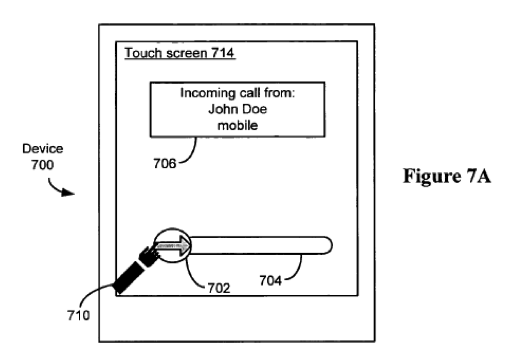 Would it help you understand this claim language – from U.S. Patent 7,657,849 – if I showed you one of the drawings from the patent? I suspect it will, so here’s one to the right.
Would it help you understand this claim language – from U.S. Patent 7,657,849 – if I showed you one of the drawings from the patent? I suspect it will, so here’s one to the right.
So what have you learned now? Now you know what the claim probably means by “a touch-sensitive display” because this figure says right on it that you’re looking at a “Touch screen.” Still, what does the claim language cover, specifically? What sort of product might infringe this claim? Here’s a big hint: This patent is owned by Apple Inc. I’m sure you’ve guessed it now – this patent is written to cover this product below.
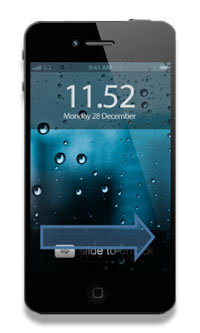 Seeing the iPhone, as in the image to the left, makes most of the claim language pretty clear. This is the now-famous Apple “slide-to-unlock” patent that covers the way users unlock the screen on an iPhone or iPad to use the device. Hasn’t the language become so much clearer now that you have the graphical information I’ve provided by showing you an iPhone?
Seeing the iPhone, as in the image to the left, makes most of the claim language pretty clear. This is the now-famous Apple “slide-to-unlock” patent that covers the way users unlock the screen on an iPhone or iPad to use the device. Hasn’t the language become so much clearer now that you have the graphical information I’ve provided by showing you an iPhone?
People, including judges and jurors, are usually combination learners, and visual information is an important component of teaching and being persuasive. Now that you’ve seen the iPhone, it’s probably pretty clear to you what the claim term “display an unlock image” means. Also, it’s probably equally clear what the claim means by “transition the device to a user-interface unlock state if the detected contact corresponds to moving the unlock image along a predefined displayed path” – it means that the device senses that you’ve slid your finger along the arrow I added to the iPhone picture. Pretty clear now, isn’t it?
Now, what other products might infringe this Apple patent? What other products might use this type of unlocking feature? What about this one?
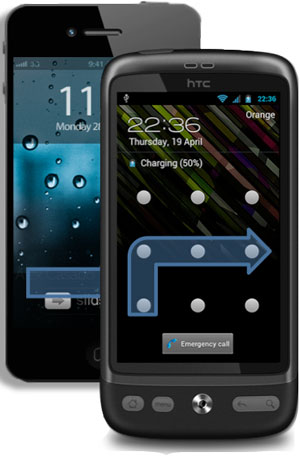 Wow, HTC's new phone looks pretty similar, doesn’t it? Are you convinced? Maybe not completely yet, but you cannot deny that the similarities in this comparison are compelling. This is a simple example of why trial graphics are so important, particularly in patent litigation when explaining claim language.
Wow, HTC's new phone looks pretty similar, doesn’t it? Are you convinced? Maybe not completely yet, but you cannot deny that the similarities in this comparison are compelling. This is a simple example of why trial graphics are so important, particularly in patent litigation when explaining claim language.
Additional Patent Litigation Resources on A2L Consulting's site:
Free E-Book: The Patent Litigation Trial Presentation Toolkit
Ryan Flax: 5 Surprises Transitioning from Patent Litigator to Litigation Consultant
20+ Articles About Patent Litigation from A2L
Free Subscription to the A2L Blog
Making Patent Drawings Come Alive!
Perfect Patent Tutorials for Your Judge
Creating a Presentation for an ITC 337 Hearing
Ryan Flax is the Managing Director of Litigation Consulting at A2L Consulting. He joined A2L after practicing as a patent litigator who contributed to more than $1 billion in successful outcomes.


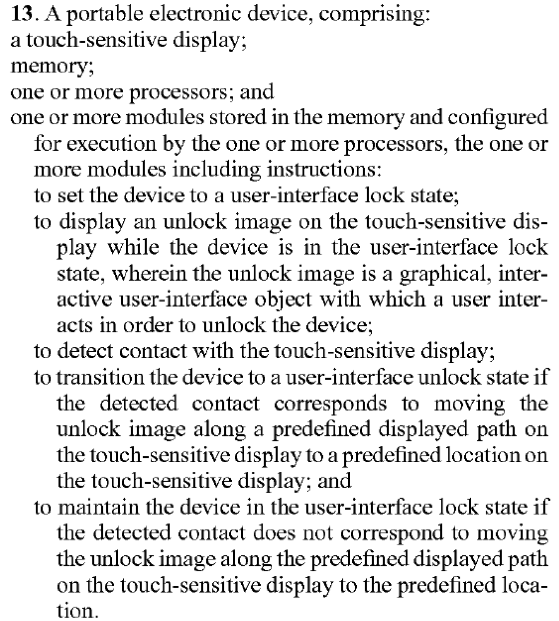

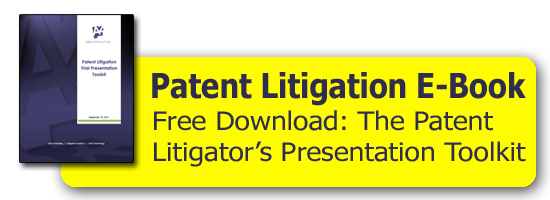

Leave a Comment